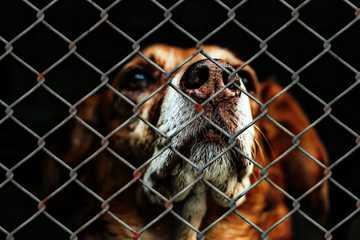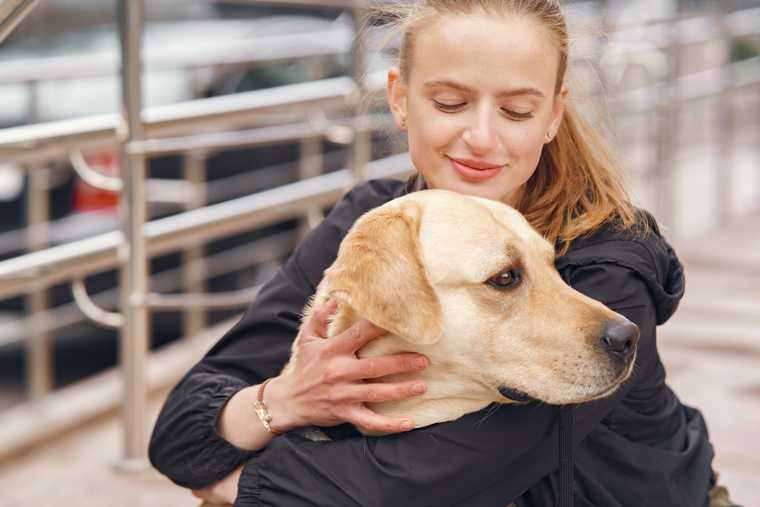How to House Train a Rescue Dog

By
Anastasiia Petrovska Updated on |Reviewed by
Karen PiwinskiRescuing a dog is a genuinely heartfelt experience; however, a sense of fulfillment comes alongside several challenges. While some dogs come from a loving household, other rescue dogs may have a long history of trauma. Constantly living outdoors, being neglected or sometimes abused, adopted dogs may have difficulty learning new habits. Such events have affected the dog’s ability to understand when and where it is appropriate to poop and pee.
Key Takeaways
- House training a rescue dog is about consistency and patience
- The majority of shelter dogs need several weeks to several months to learn new habits
- Lack of training in the past, stress and anxiety, or territorial marking are the most common problems
- Predictable routine, as well as training through positive reinforcement, are key
This guide explains the most common problems while potty training a shelter or rescue dog. We’ll discuss the potential challenges in potty training and how to help a new dog feel safe and supported.
How Long Does It Take to House Train a Rescue Dog?
There’s a lot of discussion as well as myths about house training a rescue dog. Some people claim that it may be too difficult to perform without help from certified dog behaviorists or dog trainers. Others believe that consistency, patience, and love are key elements. One thing is clear: potty training a dog from the shelter may be time-consuming and sometimes challenging.
Most experts who deal with adopted dogs say that potty training a rescue dog can take from several weeks to several months.

The exact amount of time required for that process depends on the dog’s history (if they were living outdoors, living indoors, and had been marking in the house for years, or house trained by a previous owner) as well as the dog's age.
Other issues affecting the time needed for potty training include:
- Stress and anxiety levels
- Medical issues
- Level of Confidence
- History.
It’s essential to show support and have patience to gain a dog's trust and ensure it can trust you.
Challenges in House Training Rescue or Adopted Dogs
Potty training an adopted dog is a task that requires all your compassion and a clear strategy. Below is the list of top challenges shelter dog owners face, as well as how to deal with them.

1. Past Living Situations
Past living conditions may significantly affect a dog's potty routine. Your adopted dog may be confused about peeing (depending on their history). Dogs that live outdoors or in a very limited space, as well as shelter dogs, may have learned to pee anywhere. Understanding this helps you realize that potty training wasn’t done well in the past.
To keep them in your sight, they may need to be on a leash in the beginning. They can then graduate to a supervised room where you can take them out immediately if they go potty in the house.
How to address it?
The first thing while potty training an adopted dog is to begin from scratch, as if it has never been done before. Take your dog outside every 1–2 hours and reward every time they pee outside.
If your dog has an accident at home, clean the area using an enzymatic cleaner. Regular cleaning products don’t fully remove the odor. Thus, dogs may return to the same spot to pee again.
Establish a predictable schedule: wake-up, mealtime, walks, play, etc. As a rule, adult shelter dogs do have the ability to hold their pee – they just need proper guidance.
2. Negative Associations
Many rescue dogs make great progress in a supportive home, even if they’ve been scolded or punished for accidents in the past. Instead of learning what to do, they learn to hide their emotions and mask their behavior. As a result, you see fear and confusion when they pee near humans, or they freeze when they go outside.
How to address it?
Rebuilding trust through positive reinforcement and patience is key. Make sure to:
- Never scold the dog for potty accidents
- Praise the dog for relieving itself outside
- Always supervise, but avoid hovering
- Maintain a consistent routine
- Be gentle and patient with your dog.
Many certified dog behaviorists and dog trainers, including Patricia McConnell, note the importance of creating a safe space for the dog. Replacing a previous negative experience with a positive one is essential when house training a rescue dog.
3. Lack of Training
There may be cases when your recently adopted shelter dog has never been taught. The dog doesn’t seem to understand simple things: when and where to go or how even to signal the need to pee. This often happens with dogs that previously lived in very chaotic households.
How to address it?
Treat your rescue dog like a puppy that hasn’t been house-trained. Organize your training as if you were first-time training a puppy:
- Feed and walk on schedule
- Reward almost immediately after peeing outside
- Use crates until the dog is potty trained (to prevent roaming).
Remember: clear communication alongside a consistent training routine will help you succeed.
Planning a consistent schedule can really help your dog after you first adopt them. This foundation gives them something to expect each day, and can also help them with a potty schedule
4. Stress and Anxiety
Changing homes is stressful for humans, while for dogs, changing environments may be even more overwhelming. New people, smells, and sounds – this all may be overwhelming for a shelter dog. Such stress affects a dog’s bladder control, as it does with a human’s bowel movements and digestion overall. As a result, your recently adopted dog can have more potty accidents or even seem to regress in previous training.
How to address it?
To avoid this, make sure to keep your dog’s routine predictable and the environment calm. Create a new safe space in your home – a warm and cozy bed in a quiet room or a crate. Alongside regular feeding, walking, and play time, such a calm and safe atmosphere will help to decrease anxiety. With time, the dog’s confidence increases, and potty accidents will remain in the past alongside stress and anxiety.
5. Territorial Marking
If a rescue dog keeps peeing in the house, a new environment can trigger its marking instincts. They can leave small “pee” spots all around the house – on the furniture, on the walls, on the floors. Even fully potty-trained shelter dogs can fall into such behavior so as to “claim” a new home.
How to address it?
Start by limiting access to the large spaces of the house. Give your dog a manageable space rather than full access to the entire home. Choose 1–2 rooms where you can supervise them easily and expand their freedom as their behavior improves.
Let the dog explore, but keep your dog on a leash indoors during the training session. It can significantly help to regulate territorial marking. And if an accident happens, make sure to clean everything with an enzymatic cleaner to remove all scent traces.
Consistency is key: reward calm behavior and frequent outdoor potty breaks so your dog learns exactly what you expect.
Potty Training a Rescue Dog: How Apps Can Help
The Woofz app simplifies house training a rescue dog by helping dog owners to:
- Maintain routine
- Schedule feeding and walking time
- Find and use outdoor potty training tips.
In addition, you can get professional tips for potty training from dog trainers right from the app. Many users shared that potty training an adopted dog became simpler as Woofz helped them to stay consistent and organized. It’s a perfect option for those pet parents who don’t know where to start.
Wrap Up
Adopting a rescue dog is one of the most rewarding experiences you as a dog owner can have. House training a rescue dog requires patience and consistency, kindness, and the ability to listen to your companion. Whether you work with an adopted dog, an untrained one, or an anxious rescue dog, your guidance and sensitivity are key to success.
Your patience, accompanied by training with the Woofz app, can make significant changes to your dog’s behavior. Help your dog feel confident and secure by teaching where and when to potty. Every small step builds the dog’s trust, and soon enough, potty issues will become less frustrating for both you and the dog.
